8 Parts of Speech with Examples | An Easy Guide for you
It is a fact that almost every word of English has got the capacity to be employed as a different part of speech. At one place, a particular word may be used as a noun, at another as a verb, and yet at another place as an adjective.
These words enable the learners of the English language to understand the behavior of a particular word in various positions.
Importance of Parts of Speech in Communication
As you know, English sentences are used to communicate a complete thought. The importance of parts of speech lies in their proper utilization, which can help your understanding and confidence grow immensely.
Proper usage of parts of speech means that you can impart clear messages and understand them because you know the rules of the language.
8 Parts of Speech
Each word in a sentence belongs to one of the eight parts of speech according to the work it is doing in that sentence. There are 8 parts of speech.
- Noun
- Verb
- Adjective
- Adverb
- Pronoun
- Prepositions
- Conjunctions
- Interjections
1 – Noun (Naming words)
The nouns stand for the names of people, places, animals, and things. The word noun means name. Look at these sentences.
“John lives in Chicago. He has two bikes. He is fond of riding bikes.”
In the above example, John is the name. We cannot use the same name again and again in different sentences. Here, we used “he” in the next two sentences instead of “John”. “He” is called the pronoun.
Types of nouns are
1.1 – Common Noun
It describes a person, place, and thing.
Examples: City, country, town, boy.
1.2 – Proper Noun
It includes a particular person, place, thing, or idea and begins with a capital letter.
Examples: Austria, Manchester, United Kingdom, etc.
1.3 – Abstract Noun
An abstract noun describes names, ideas, feelings, emotions or qualities, the subject of any paragraph comes under this category. It does not take “the”.
Examples: grief, loss, happiness, greatness.
1.4 – Concrete Noun
It describes material things, persons or places. The existence of that thing can be physically observed.
Examples: Book, table, car, etc.
1.5 – Countable and Uncountable Noun
Countable nouns can be singular or plural. It can be counted.
Examples: Ships, cars, buses, books, etc.
The uncountable noun is neither singular nor plural. It cannot be counted.
Examples: Water, milk, juice, butter, music, etc.
1.6 – Collective Noun
It includes the group and collection people, things or ideas. It is in unit form and is considered as singular.
Examples: Staff of office, group of visitors.
However, people and police can be considered both singular and plural.
1.7 – Possessive Noun
It shows ownership or relationship.
Examples: Jimmy’s pen.
Further Reading: 11 Types of Nouns with Examples
2 – Verb (Saying words)
These are used for saying something about persons or things. The verb is concerned with doing or being.
Examples
- A hare runs (action) very fast.
- Aslam is a good student.
Types of verbs
2.1 – Actions verbs
(run, move, write etc)
2.2 – Linking verbs
(to be (is, am, are, was, were), seem, feel, look, understand)
2.3 – Auxiliary (helping) verbs
(have, do, be)
2.4 – Modal Verbs
(can, could, may, might, will/shall)
2.5 – Transitive verbs
It takes an object.
Example – He is reading a newspaper.
2.6 – Intransitive verbs
It does not take the object.
Example – He awakes.
Further Reading: What are the verbs in English?
3 – Adjectives (describing words)
These are joining to nouns to describe them.
Examples
- A hungry wolf.
- A brown wolf.
- A lazy boy.
- A tall man.
It is used before a noun and after a linking verb.
Before noun example
A new brand has been launched.
After linking verb example
Imran is rich.
It is used to clarify nouns.
Example: smart boy, blind man
Types of adjectives
3.1 – Simple degree
He is intelligent.
3.2 – Comparative
Ali is intelligent than Imran.
3.3 – Superlative
Comparison of one person with class, country or world. In this type “the” is used.
Example: Ali is the wisest boy.
3.4 – Demonstrative adjective
It points out a noun. These are four in number.
This That These Those
3.5 – Indefinite adjectives
It points out nouns. They often tell “how many” or “how much” of something.
Interrogative adjectives: it is used to ask questions
Examples
- Which book?
- What time?
- Whose car?
Further Reading: More About Adjectives
4 – Adverbs
Describing words that are added to verbs. Just as adjectives are added to describe them, adverbs are added to verbs to modify their meaning. The word “modify” means to enlarge the meaning of the adverbs.
Examples
- Emma sings beautifully. (used with verb)
- Cameron is extremely clever. (used with adjective)
- This motor car goes incredibly fast. (used with another adverb)
Types of adverb
4.1 – Adverb of manner
This type of adverb deals with the action something
Example
- I walk quickly.
- He wrote slowly.
4.2 – Adverb of place
Happening of something or the place where it happens.
Examples:
There was somebody sitting nearby.
Here, these, upstairs, nowhere everywhere, outside, in, out, are called adverb of place.
4.3 – Adverb of time
It determines the time of the happening of something.
Examples
- She went there last night.
- Have you seen him before?
- He wrote a letter yesterday.
Tomorrow, today, now, then, yesterday, already, ago.
4.4 – Linking adverbs (then, however)
It creates a connection between two clauses or sentences.
Example
There will be clouds in Lahore. However, the sun is expected in Multan.
Note: Besides modifying the meaning of a verb, adverbs also modify adjectives and other adverbs.
Examples
- It is a very large house.
- He is too weak to walk.
- He ran too fast.
Further Reading: 11 Types of Adverbs with Examples
5 – Pronouns
Words that are used instead of nouns to avoid tiresome repetition. Instead of using the word man in a composition, we often write he, him, himself. In place of the word “woman”, we write she, her, or herself. For both the nouns ‘men’ and ‘women’ we use, they, them, themselves.
Some of the most common pronouns are
Singular: I, he, she, it, me, him, her
Plural: We, they, out, us, them.
Examples
Imran was hurt. He didn’t panic.
He checked the mobile. It still worked.
Types of Pronouns
It stands instead of persons. They have different forms according to the person who is supposed to be speaking.
First person: I, we, me, us, mine, our, ourselves.
Second person: thou, you, there.
Third person: He, she, it, his, him
5.1 – Possessive pronouns
Such as mine, ours, yours, hers and theirs.
- This book is mine.
- My horse and yours are tired.
5.2 – Relative pronoun
Who, whom, which and they are called relative pronouns. They are called relative because they relate to some word in the main clause. The word to which pronoun relates is called the antecedent.
Example
I saw a boy who was going.
In this sentence, who is the relative pronoun and boy is its antecedent.
This is the girl who won the prize.
“which” is used for animals and things.
The dog which barks.
That is used instead of who or which in this case.
This is the best picture that I ever saw.
5.3 – Interrogative pronouns
It is used to introduce or create an asking position in a sentence. Who, whom, which, and whose are interrogative pronouns.
Examples
Who wrote this book? (for persons only)
What is your name? (for things)
Which boy here is your friend?
5.4 – Demonstrative pronoun
It points out a person, thing, place or idea. This, that, these and those are called demonstrative pronouns.
That is a circuit-breaker.
These are cups of a team.
5.5 – Reflexive pronoun
The type of pronoun that ends in self or selves is called a reflexive pronoun.
Examples: myself, ourselves, yourself, herself, himself, itself, themselves.
Use in sentence: They worked hard to get out themselves from the debt.
Indefinite pronoun: An indefinite pronoun does not refer to a specific person, place thing or idea.
Examples
Nothing lasts forever.
No one can make this design.
Further Reading: Different Types of Pronouns with 60+ Examples
6 – Prepositions
Words placed before a noun or pronoun to show how the person or thing denoted stands in relation to some other person or thing.
Examples: A house on a hill. Here, the word “on” is a preposition.
The noun and pronoun that follow the preposition are called its object. We can identify prepositions in the following examples.
In 2006, in March, in the garden,
On 14th August, on Friday, on the table
At 8:30 pm, at 9 o’clock, at the door, at noon, at night, at midnight
However, we use “in” for morning and evening.
Further Reading: Preposition Usage and Examples
7 – Conjunctions (joining words)
They join words or sentences.
Examples: Jimmy and Tom are good players.
In the above sentence, “and” is a conjunction.
Types of conjunctions
These are the types of conjunctions.
- Nor (used in later part of the negative sentence)
- But (when two different ideas are described in a sentence)
- Yet (when two contrast things are being described in a sentence)
- So (To explain the reason)
- For (it connects a reason to a result)
- Or (to adopt two equal choices)
- And (to join two things or work)
Further Reading: Conjunction Rules with Examples
8 – Interjections
Interjection words are not connected with other parts of a sentence. They are through into a sentence to express some feeling of a mind.
Examples: Hurrah! We won the match.
Alas, hurrah, wow, uh, oh-no, gush, shh are some words used to express the feeling.
It is important to note that placing a word in this or that part of speech is not fixed. It depends upon the work the words are doing in a particular sentence. Thus the same word may appear in three or four parts of speech.
Further Reading: More about Interjections
You can read a detailed article about parts of speech here.
Parts of Speech Exercise with Answers
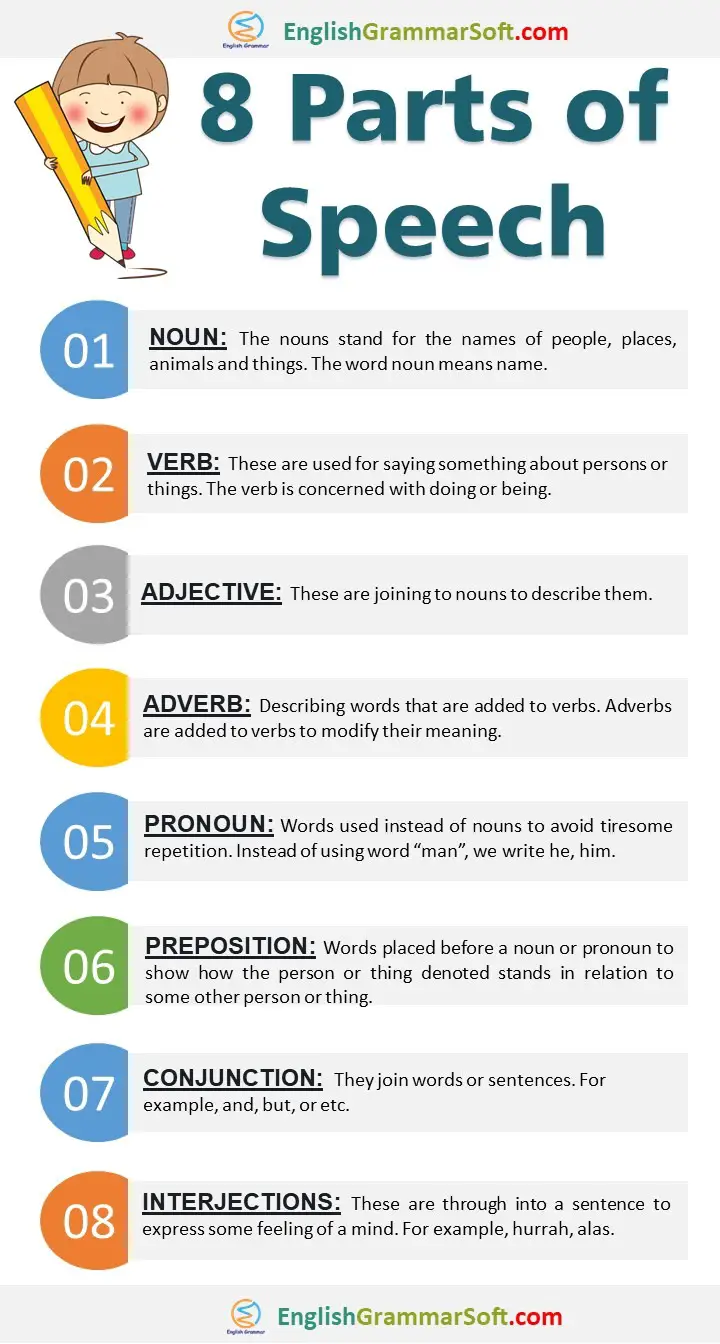
Read also: 71 Idioms with Meaning and Sentences

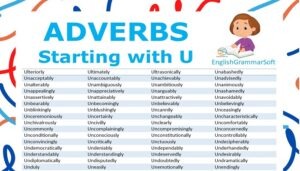
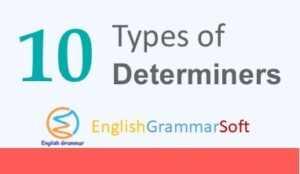
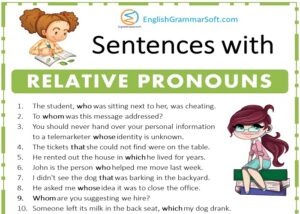

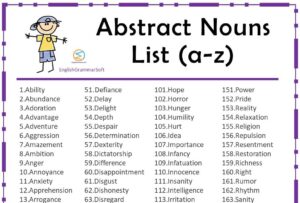
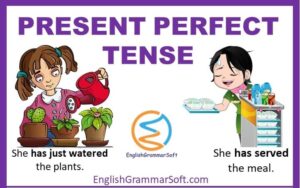

It’s not dull when you write about it.. out of every blog about this, yours is the best.